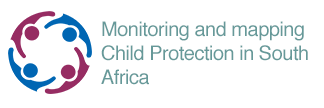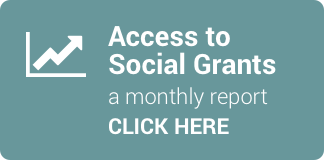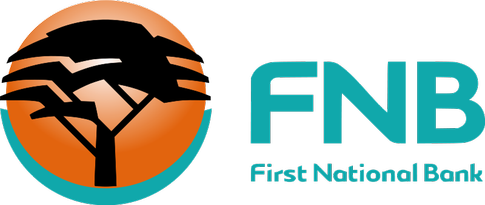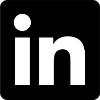Definition
This indicator refers to the percentage of children, at a given period, who are HIV positive.Data
Source
Thembisa Model version 4.6
Notes
Sample surveys are always subject to error, and the proportions simply reflect the mid-point of a possible range. The confidence intervals (CIs) indicate the reliability of the estimate at the 95% level. The wider the CI, the more uncertain the proportion. Where CIs overlap for different sub-populations or time periods we cannot be sure that there is a real difference in the proportion, even if the mid-point proportions differ. CIs are represented in the bar graphs by vertical lines at the top of each bar.
What do the numbers tell us?
South Africa is currently the country with the largest number of people living with HIV in the world. Many children are HIV positive or have become ill and died due to AIDS. The majority of HIV-positive children are infected before and during the birth process (perinatal transmission) while some are infected later through breastfeeding (postnatal transmission). Children may also become infected through sexual intercourse, including sexual abuse.
It is important to have an estimate of the number of children in the country infected with HIV to plan for health services to meet their needs adequately. In addition, knowing the prevalence from year to year also helps to monitor the epidemic and gives an indication of the effectiveness of prevention measures such as the prevention of mother-to-child transmission (PMTCT) programme.
HIV prevalence in children under 15 years rose through the 2000s and then started declining from 2009 as the PMTCT programme was rolled out nationally to prevent mother-to-child transmission following the success of the Treatment Action Campaign court case. According to modelled estimates from Thembisa, under-15 prevalence rates declined from a high of 2.7% in 2009 to 2.0% in 2017, and are projected to be 1% in 2024 after which they will continue to decline slowly until 2030.1
The greatest decrease in paediatric HIV prevalence over the past two decades has occured in the provinces that historically had the highest prevalence rates: KwaZulu-Natal, Mpumalanga, Free State, Gauteng and North West. The declines in these provinces are the main contributors to declining rates of HIV prevalence among children nationally. Notably, the esimated HIV prevalence in children under 15 years in Mpumalanga has decreased from a high of 3.9% in 2008 to 1.4% in 2024, while the prevalence in KwaZulu-Natal decreased from a 3.8% in 2009 to 1.3%. In Gauteng, child prelavence rates declined from 2.9% in 2009 to below 1% in 2024. The Western Cape consistently has the lowest rate of HIV prevalence in children, according to the model.
1 Johnson LF, Dorrington RE (2023) Modelling the impact of HIV in South Africa’s provinces: 2023 update. Centre for Infectious Disease Epidemiology and Research, University of Cape Town.
It is important to have an estimate of the number of children in the country infected with HIV to plan for health services to meet their needs adequately. In addition, knowing the prevalence from year to year also helps to monitor the epidemic and gives an indication of the effectiveness of prevention measures such as the prevention of mother-to-child transmission (PMTCT) programme.
HIV prevalence in children under 15 years rose through the 2000s and then started declining from 2009 as the PMTCT programme was rolled out nationally to prevent mother-to-child transmission following the success of the Treatment Action Campaign court case. According to modelled estimates from Thembisa, under-15 prevalence rates declined from a high of 2.7% in 2009 to 2.0% in 2017, and are projected to be 1% in 2024 after which they will continue to decline slowly until 2030.1
The greatest decrease in paediatric HIV prevalence over the past two decades has occured in the provinces that historically had the highest prevalence rates: KwaZulu-Natal, Mpumalanga, Free State, Gauteng and North West. The declines in these provinces are the main contributors to declining rates of HIV prevalence among children nationally. Notably, the esimated HIV prevalence in children under 15 years in Mpumalanga has decreased from a high of 3.9% in 2008 to 1.4% in 2024, while the prevalence in KwaZulu-Natal decreased from a 3.8% in 2009 to 1.3%. In Gauteng, child prelavence rates declined from 2.9% in 2009 to below 1% in 2024. The Western Cape consistently has the lowest rate of HIV prevalence in children, according to the model.
1 Johnson LF, Dorrington RE (2023) Modelling the impact of HIV in South Africa’s provinces: 2023 update. Centre for Infectious Disease Epidemiology and Research, University of Cape Town.
Technical notes
Thembisa is a mathematical model of the HIV epidemic in South Africa. Thembisa builds and improves on the previous ASSA AIDS and Demographic model, which was widely used for the purpose of estimating HIV prevalence in children as well as other HIV-related prevalence and treatment indicators. Over time, however, evidence suggested that the ASSA 2003 model may have been under-estimating the HIV prevalence in children, and further adjustments were made in the 2008 model. The ASSA model has not been updated since 2011 and therefore does not reflect subsequent advances in HIV prevention and treatment.
The Thembisa model was created by the same actuarial team that led the development of the ASSA mode and incorporates new features not included in any of the previous models (for example, the impact of male circumcision). Thembisa version 1 was published in 2014, following which various updates were published as improvements were made. Version 4.2 (2019) was the first version to be calibrated to child mortality data. The most recent version, 4.6, was released in 2023.
The model is calibrated to two main HIV prevalence data sources: antenatal clinic survey data and household survey data. The latter include four nationally representative household surveys conducted by the Human Sciences Research Council in 2005, 2008, 2012 and 2027 as well as the 2016 Demographic and Health Survey.
The Thembisa model was created by the same actuarial team that led the development of the ASSA mode and incorporates new features not included in any of the previous models (for example, the impact of male circumcision). Thembisa version 1 was published in 2014, following which various updates were published as improvements were made. Version 4.2 (2019) was the first version to be calibrated to child mortality data. The most recent version, 4.6, was released in 2023.
The model is calibrated to two main HIV prevalence data sources: antenatal clinic survey data and household survey data. The latter include four nationally representative household surveys conducted by the Human Sciences Research Council in 2005, 2008, 2012 and 2027 as well as the 2016 Demographic and Health Survey.
Strengths and limitations of the data
Since 2017, Thembisa has been the source on which the official UNAIDS estimates for South Africa are based. The Thembisa developers at the University of Cape Town work in partnership with UNAIDS and the South African Department of Health to produce these estimates.
Thembisa Version 4.6 (released in 2023) incorporates the following changes to previous versions.The model has been extended to allow for a policy change in 2019, which was to conduct PCR screening in HIV-exposed infants at 6 months. Assumptions about early infant diagnosis (EID) uptake have also been updated based on new data, leading to a slightly earlier average age at diagnosis in children.
Thembisa Version 4.6 (released in 2023) incorporates the following changes to previous versions.The model has been extended to allow for a policy change in 2019, which was to conduct PCR screening in HIV-exposed infants at 6 months. Assumptions about early infant diagnosis (EID) uptake have also been updated based on new data, leading to a slightly earlier average age at diagnosis in children.
- The model of pre-exposure prophylaxis (PrEP) uptake has been revised so that the data inputs are numbers initiating PrEP in each period, rather than numbers currently on PrEP at different time points. This has led to a downward revision in estimated numbers on PrEP.
- Although the previous version of Thembisa included new demographic estimates, it was not re-calibrated using these new demographic estimates. Re-calibration of the new model (version 4.6) with the updated demographic estimates has changed the calibration to the recorded death data (which has also been updated to include recorded deaths in 2017 and 2018 [3]).
- The model is calibrated to the unpublished HIV prevalence data from the 2022 antenatal survey (not included previously).
- The model has been updated using more recent programmatic data (numbers of individuals tested for HIV, numbers of patients receiving antiretroviral treatment (ART), rates of viral suppression, numbers of medical male circumcision (MMC) operations and numbers of people using PrEP.






 The SAECR 2024 tracks trends on the status of children under 6.
The SAECR 2024 tracks trends on the status of children under 6. 








